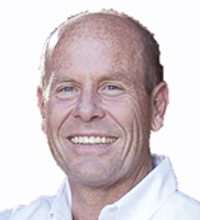Making tankless water heating even better with geothermal
We’re always looking for something better to offer our customers. The tankless water heating boom has been good for business the environment. These units are good for the environment because instant water heating eliminates the energy leaching effects of maintaining a 50- or 80-gallon storage tank.
Tankless heating can be an easy sell, especially when using point of use heaters to take care of the first 30 seconds of cold water. And, that also saves water because the faucet doesn’t need to run as long to “get hot.”
Where can we improve on this design? Some hydronic professionals like the idea of placing a non-heated holding tank somewhere in the conditioned space, because the water in the tank will assume room temperature. And as a result, take less heating energy than it would take to heat up the wintry temperatures of the incoming cold water from the water main. This is brilliant because this design can save energy, and it can increase the output capacity of the tankless water heater.
Geothermal heat pumps (GHPs) take this process one step further, if you know what to do. GHPs can be factory-equipped with “desuperheaters,” or domestic hot water generators. Referring back to the non-heated holding tank idea, what if we dumped this harvested heat generated during the heating and cooling cycle of the GHP into that tank?
For a review, a GHP simply moves heat “uphill,” speaking thermodynamically. We all know that energy moves only from warmer to cooler zones. A heat pump takes available heat of any kind and manipulates the BTUs by concentrating them to a sufficient temperature for this heat transfer process to take place.
In the normal process of cooling a building, there is abundant waste heat that comes from the process of cooling. During the heating mode, the GHP can provide impressive quantities of heat energy during the heating process at a fraction of the energy cost. That’s because tankless heaters use either combustion or electric heat that is rated at a coefficient of performance (COP) of 1.0 or less. GHPs boast COPs of 4.0 to 5.0 or more, meaning that it takes about 25 percent of the energy consumption to make hot water from a GHP as compared to a tankless heater.
Another way to look at this efficiency rating scale is that a COP of 1.0 means that the device is 100 percent efficient, delivering every bit of energy consumed into usable heat for the process. That’s why a combustion heater that delivers heating efficiency in the 90 percent plus range is so good. This is where most people get tripped up. How can anything be more than 100 percent efficient, or deliver more heat energy than it uses?
That’s why heat pumps are called “heat pumps.” They don’t create heat, they move it and concentrate it. Like a water-pump that “lifts” water to a holding tank where it can be gravity-fed to buildings, a heat pump lifts heat stored in the ground to a higher temperature where it can be thermodynamically fed wherever it’s needed.
Getting back to the holding tank idea, GHPs with DHW generators typically don’t run on demand for hot water needs. This means they don’t cycle every time the temperature in the tank goes below a set point. They operate as needed for cooling or heating the building, supplementing with free or nearly-free hot water as they heat and cool the building. Unless you find yourself in what is referred to as “swing-time” (no heating or cooling needed), you can bet that the building will always have a supplemental DHW supply. Just one more benefit you will have when you “get ready to geo.”
Geothermal heating and cooling is a hydronic technology that is paving the way to remarkably increased benefits for plumbing professionals and consumers alike.
Special thanks to PixyJackPress and Donal Blaise Lloyd for use of illustrations in this column from the book, “Geo Power.”
Jay Egg is a geothermal consultant, writer and the owner of EggGeothermal. He has co-authored two textbooks on geothermal HVAC systems published by McGraw-Hill Professional. He can be reached at jayegg.geo@gmail.com.





